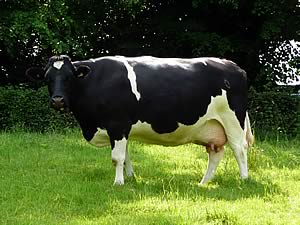 |
|||||||||
|
|||||||||||||||||||
|
|
Lameness
Lower on Organic Dairy Farms An SAC study has shown that the incidence of lameness is lower on organic dairy farms compared to non-organic farms. The lower incidence was associated with longer periods that the cows spent at grass and the higher age at which they first calve. The levels of hock lesions was also lower on organic farms.
The three-year study was sponsored by Defra at a cost of £300,000
and ran from 2003 to 2007. SAC was supported in the design of
the project and in farmer recruitment by The Soil Association,
Kingshay Farming Trust, OMSCo, the Veterinary Epidemiology and
Economics Research Unit (VEERU) at Reading University and the
Royal Agricultural College. The study compared forty organic
farms and forty non- organic farms across Great Britain, and
assessed lameness, mastitis, ketosis, somatic cell counts, fertility
and cow behaviour.
|
||||||||||||||||||

|
|
||||||||||||||||||
| home | agri-services | pedigree
pen | news | dairy | beef | machinery property | organisations | site map |
|||||||||||||||||||
